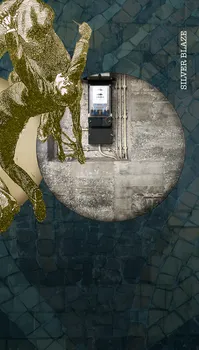
SILVER BLAZE
The introduction of hydraulic cements in the middle of the 19th century and the development of reinforced concrete structures allowed a wide range of modern construction tasks and unleashed new technical feats. And yet, in architectural work, concrete remained invisible for a long time. Against the backdrop of the enormous task of reconstruction in Europe after WW II as well as due to new possibilities of processing, concrete underwent an enormous upswing as a building material. Only then its use for public construction tasks was conspicuous. This finally also brought about a change of image of concrete in the second half of the 20th century.
The importance of concrete buildings exceeds their significance in contemporary history. Concrete construction combines scientific and technical research and development; types of industrial production; new, innovative construction methods; standardization efforts. However, It is frequently overlooked that an extremely high level of craftsmanship is required for precisely those impressive buildings of the post-war period with their exposed concrete facades. Last but not least, the high esteem of fair-faced concrete surfaces in our times is due to extensive skills of craftsmanship of formwork design craftsmanship. Seemingly unaltered, at least non-repeatable, the original work process has left authentic traces here. In our projects in the field of research Silver Blaze we are investigating these surfaces of fair-faced concrete buildings.
Historic concrete repairs
Project term: 02/2021 – 01/2024, second phase of funding: 02/2024 – 01/2026
Funded by the German Research Foundation (DFG)
Concrete surfaces and formwork construction
Project term: since 2019
funded by a dissertation fellowship by Wüstenrot Stiftung, May 2020 – April 2023
Ulrike Wulf-Rheidt-Stiftungsfonds zur Förderung des wissenschaftlichen Nachwuchses in der archäologischen Bauforschung, May 2023 – October 2023